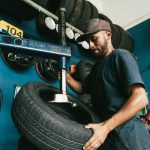How U.S. Automotive Policies Are Shaping Global Industry Trends
Original Equipment Manufacturers’ Growth Strategies
In shaping the future of the automotive industry, Original Equipment Manufacturers (OEMs) are implementing growth strategies that involve substantial strategic investments and expanding production capabilities. These efforts are driven by the need to remain competitive and innovative in a rapidly changing market landscape.
Strategic Investments and Market Analysis
OEMs are focusing on strategic investments to capitalize on emerging opportunities in the global automotive market. By conducting comprehensive growth opportunity analysis, they identify potential areas for expansion and innovation. Investments in advanced technologies, such as electric and autonomous vehicles, reflect a commitment to future-proofing their operations.
Collaborations and partnerships with tech companies further enhance these strategies, fostering innovation. This approach helps OEMs access cutting-edge developments and streamline their research and development processes. Additionally, these strategic moves boost a company’s market position, allowing them to adapt quickly to shifting consumer preferences and regulatory changes.
Establishing and Diversifying Production Base
To meet growing global demand and reduce dependency on specific regions, OEMs are working on establishing a diversified production base. Setting up new manufacturing facilities across different countries offers numerous advantages such as cost efficiency, resilience, and proximity to key markets.
Expanding production in regions with emerging markets allows OEMs to tap into new consumer bases. Furthermore, diversification minimizes risks associated with geopolitical tensions and supply chain disruptions. By incorporating local resources and labor, these companies not only drive economic growth in new areas but also build stronger community ties.
Automaker Adaptation to Industry Changes
As U.S. automotive policies evolve, major automakers are making significant adjustments. These adaptations clearly illustrate strategic shifts in vehicle production and market focus.
Response of Hyundai in the Global Arena
Hyundai has been proactive in adapting to changes influenced by U.S. automotive policies. The company has increased its focus on developing electric vehicles to align with environmental regulations emphasizing sustainability. Hyundai’s commitment to innovation is evident through its investment in fuel cell technology and battery electric vehicles, aiming to reduce emissions.
Internationally, Hyundai is expanding partnerships with tech firms to enhance vehicle connectivity and autonomous driving capabilities. The automaker has also increased its production presence in the United States to better serve local markets and mitigate the impact of tariffs. By aligning its strategies with policy shifts, Hyundai maintains its competitive edge in a rapidly changing industry landscape.
The Adjustments of Ford and Stellantis
Ford’s approach to adapting involves a substantial transformation towards electrification. The company is investing heavily in electric and hybrid vehicle lines, driven by both policy mandates and consumer demand trends. Ford plans to establish itself as a leader in the electric vehicle market by enhancing production facilities and collaborating with battery suppliers.
Stellantis, in contrast, is consolidating its global operations to improve efficiency and reduce costs. This includes streamlining manufacturing processes and prioritizing mobility solutions like connected vehicles. Stellantis places strong emphasis on regional manufacturing and sales strategies to comply with varying regulatory requirements and consumer preferences globally. Both companies are focused on integrating new technologies to stay competitive as they navigate evolving industry landscapes.



